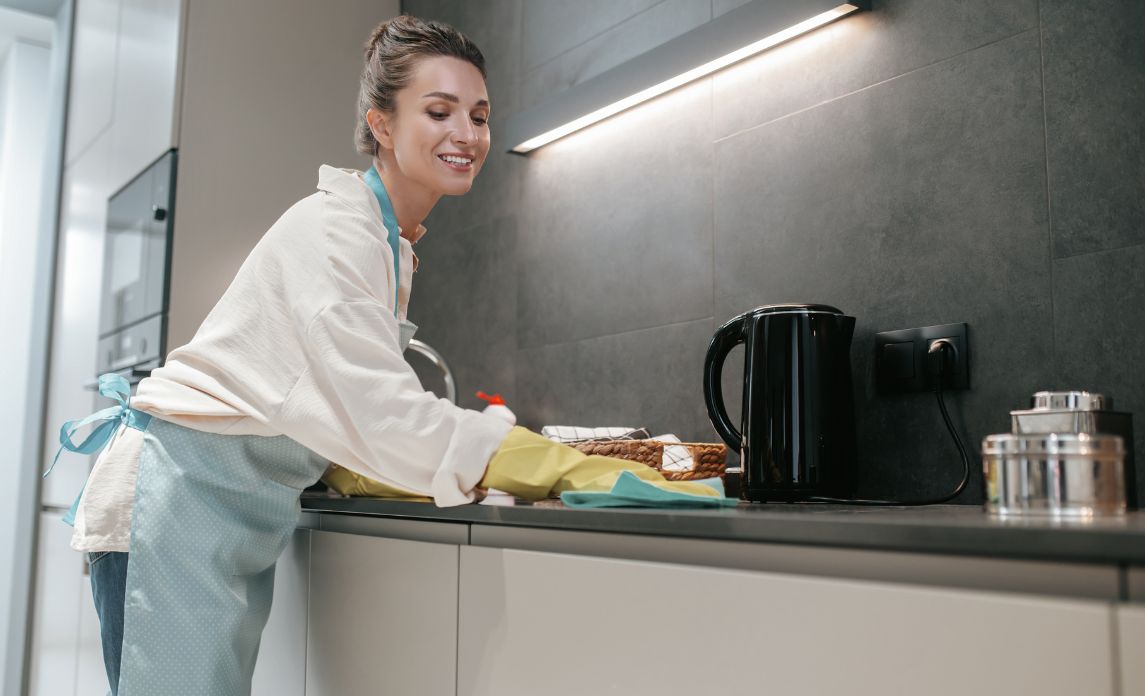In many homes, the kitchen is the centre of the household. It’s where the family prepares meals, and sometimes even entertains guests. For restaurants and similar establishments, on the other hand, the kitchen is a kind of headquarters where the “magic” happens.
All of this is to say that it’s important to keep the kitchen clean and hygienic. This is especially important for food service businesses, for both their reputation and their compliance with New Zealand labour safety laws.
With a spotless kitchen, you can fully enjoy the process of food preparation. You can also avoid a variety of food-borne illnesses, including E. coli infections and salmonellosis. Fortunately, you can hire professional cleaners like Crewcare to ensure that your kitchen is as clean and hygienic as possible.
However, there are also plenty of day-to-day things you can do for some regular upkeep to ensure that your kitchen is always spick and span. Here are some things to remember:
Always Wash Your Hands
One of the simplest but most effective ways to keep your kitchen clean is to wash your hands properly before and after handling food, before you start to cook, and in between tasks. This will prevent cross contamination, especially between raw and cooked foods.
It’s also important to wash your hands if they’re oily to prevent cooking implements from slipping from your grasp. What’s more, oil makes it much easier for your hands to attract and transfer dirt and germs. It’s best to soap up and wash your hands as soon as possible when they’re greasy.
Use Two Cutting Boards
Aside from your hands, another potential transfer agent for harmful bacteria are cutting boards. Specifically, if you use only one cutting board for a variety of foods and ingredients, you’re increasing the risk of cross contamination.
To stay safe, it’s best to use at least two cutting boards: one for raw meats and one for produce. It’s also a good idea to use separate utensils for different items. For example, if you’re grilling both meat and vegetables, it’s best to use different tongs to flip them over. While this may entail more clean-ups, it’s a much safer option.
Wash and Sanitise Surfaces
Keep your kitchen hygienic by regularly wiping down surfaces. It’s particularly important to wipe up liquid messes immediately; letting them stand can dry them up and make them more difficult to remove.
It’s also crucial to wash your kitchen counters with soap and warm water after messy preparations, like rinsing muddy vegetables or chopping raw meat. After washing, follow things up with food-safe disinfectant.
Keep a Cleaning Cloth Handy
Speaking of wiping down surfaces, keeping your kitchen spotless is much easier if you have a couple of cleaning cloths handy. This will allow you to quickly deal with spills and keep your working space neat.
Change Towels Everyday
To prevent bacteria from growing on them, hand towels and cleaning cloths should be replaced daily. Keep in mind that damp environments are breeding grounds for germs, so it’s best to have a fresh set of towels and rags every day. For the used ones, wash them using hot water and the appropriate detergent.
Do note that microfibre cloths should be washed separately. Some fabrics tend to produce lint when washed; these fibres can get caught in the microfibre filaments and reduce the cloth’s efficiency. Moreover, microfibre usually doesn’t require detergent for washing. If you want to use detergent, make sure that it’s mild.
Be Conscientious About Sweeping Up Messes
If something spills on the kitchen floor, sweep or mop them up immediately. This will prevent the mess from getting worse, and also help you avoid accidents. For sticky liquids, wet-mop the spill first then rinse the mop and pass over the spot one more time. Then, get a separate mop or a rag to dry.
Clean the Sink After Use
Once you’re done with cooking, make sure to clean the sink to prevent the build up of dirt and grime. If you prepared something particularly oily, you can use a mixture of baking soda and vinegar to break down the grease. Make sure to scrub while the baking soda and vinegar are still bubbling to achieve the best results; then wash the mixture off with your preferred dish detergent.
Doing this will ensure not just cleanliness, but also that your sink is prepared for another round of use.
Studies have shown that a kitchen actually harbours more germs than a toilet or bathroom. This makes being conscientious about cleanliness even more paramount, because even the slightest amount of harmful bacteria can potentially cause disease.
Fortunately, there are many simple ways to keep your kitchen spotless. Whether you’re trying to straighten up your home kitchen or maintain order in a restaurant’s cooking area, you can follow the tips above to ensure health, safety, and hygiene.


